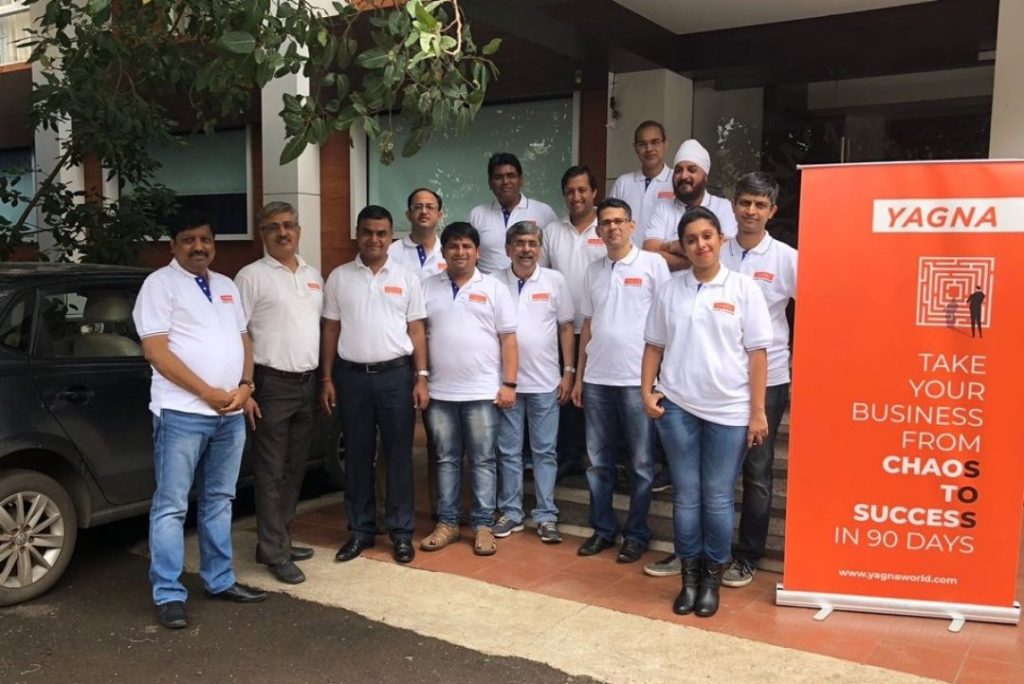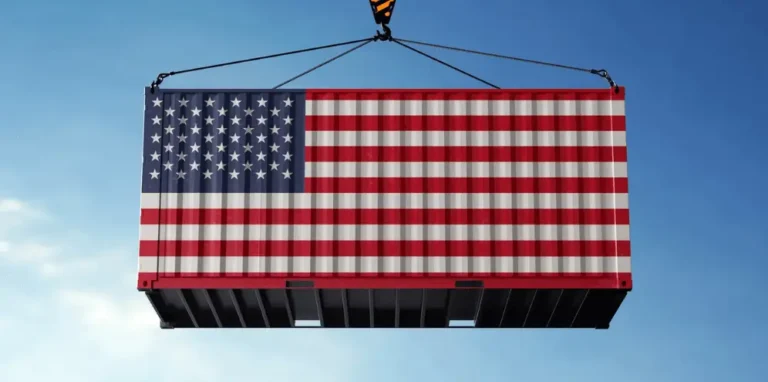Today’s supply chains are global, so it’s no surprise that interest in DDMRP spans the world, too. In India, Demand Driven Technologies has had the privilege of partnering with Yagna, a supply chain “Resultancy” that helps small to mid-sized businesses streamline operations and improve materials flow.
After collaborating on the implementation of Replenishment+ at an Indian industrial products manufacturer, we caught up with Yagna co-founders Deepak Nagar and Aniruddha Joshi, or AJ, to learn more about the firm and how it helps clients deal with the variability, volatility, and variety that plague contemporary supply chains. Paddy Ramalyengar, Executive Consultant at Demand Driven Technologies, weighs in, as well, to talk about the shortcomings of ERP and how DDMRP helps address them.
Let’s start with your background of the firm
Deepak: Yagna was founded in 2017. We have four co-founders, each with quite different backgrounds, so there is a huge amount of diversity in the way we look at the world. The one thing that binds us together is that we all have a background in the Theory of Constraints, or TOC.
We created Yagna because we believed that owner-managed small and medium enterprises in India—companies that might have $5 million to $50 million in annual turnover—aren’t served well when it comes to management consulting, because all they get is advice. Nobody helps them implement stuff. By contrast, we take pride in helping people implement things. We put our skin in the game, and a large part of our fee is linked to the results that we deliver to our clients.
Where does the name Yagna come from?
Deepak: Yagna is a Sanskrit word that appears in many of the holiest scriptures of India and is referred in two different contexts. One is related to ritualistic fire worship, where different natural forces like wind, water, earth, and space are invoked. The other part has to do with what people are supposed to do as individuals for the welfare of society. Yagna calls for harnessing the laws of nature, in a scientific way, for the benefit of society—in an unselfish, or even better, selfless manner. The laws of nature are related to cause and effect. TOC is also all about cause and effect. We believe Yagna and TOC are intimately related.
What does TOC mean to you?
AJ: When someone talks about the word “theory,” the immediate connotation is that it is not practical. But I think Kurt Lewin said it best: “there is nothing so practical as a good theory.” You can only call a body of knowledge a theory when it has been practiced across different organizations and environments, delivered results, and stood the test of time. “Constraint” is another word that’s often misunderstood. People look at a constraint as something negative. But if you look at it from a TOC point of view, a constraint is actually your best friend—it’s your leverage point, and it tells you where to focus. So that’s our take on this very practical and very powerful body of knowledge.
And what about DDMRP—how did you first learn about that methodology?
Deepak: After Dr. Goldratt passed away in 2011, there was a sense that TOC would lose steam. I was always looking out for the latest thinking in TOC, because I knew that it would definitely evolve. Then, around 2014, I came across a paper called Beyond MRP, and I thought, here is something that takes TOC and converts it into a repeatable solution. So when we formed Yagna, the first thing we did was become channel partners of Demand Driven Technologies and affiliates of the Demand Driven Institute.
If I understand correctly, you’ve all been certified by the Demand Driven Institute.
Deepak: All four of us were certified by the Demand Driven Institute back in 2016, and we later upgraded our initial CDDP certification to DDPP. Carol Ptak has also recognized me as an instructor for teaching DDPP in India.
Let’s pull back for a moment and talk about some of the shortfalls that you’ve seen with traditional ERP systems and MRP methodologies.
Deepak: Many of our clients have implemented SAP, which is a very traditional ERP for large companies. Most of the time, ERP is used for financial and material accounting, but very rarely for operational planning. Planning is always one of the weakest links, because it is always left to some Excel based solution that people patch together.
AJ: Dr. Goldratt addressed the concept of “necessary, but not sufficient” in one of his books. We find exactly the same thing in organizations—all they’ve done with an ERP is automate existing rules and practices. Even in bigger companies, ERP is often relegated to what’s at best a transactional system. In the worst cases, companies can’t even get basic data for inventory or sales orders from their ERP.
How does DDMRP fit into that landscape?
Deepak: The whole thought process behind DDMRP is to acknowledge the fact that variation exists, whether from the supply side or the demand side or even from inside the company. Using demand driven buffers based on time, stock, and capacity to manage to work in an uncertain environment thus makes sense. It’s also is a very natural progression from a TOC perspective, because there are rules about where to place inventory, how much, what are the buffer profiles to be created and how it is going to be dynamically flexing.
Paddy: In my experience—and I’ve interacted with companies that use all of the major ERPs—what has happened is that ERP has actually grown beyond what a team of people can really grasp. Let’s say you walk into a business and say, “Hey, do you know where I can get this master data?” You’ll need at least five or six people to help you understand how things have been customized, and it will take at least four or five hours to get a simple piece of data about lead time. People got into ERP to make it easier to run their businesses. Now, instead of them managing the business, the ERP has started managing them.
You recently implemented Replenishment+ at a company called Ramdevs Motors. Can you talk about that experience?
Deepak: Ramdevs is a small company that manufactures pumps and motors as a contract manufacturer for larger branded products. We set them up with an Excel based planning system two years ago. This system was based on TOC and some DDMRP principles, but it was not a full DDMRP solution. It was working pretty well, and it helped them bring some order to the environment and focus on increasing productivity. But as they started growing, they realized it was going to take a lot of time to maintain that system going forward. Excel based systems require a certain kind of expertise to run and manage and reconfigure as the business moves, and mistakes can be fatal.
There are also certain functionalities, like dynamic buffer management, that you can’t build in Excel.
Deepak: Absolutely. Once the client saw the Replenishment+ interface and all the functionalities—and realized how easy it would be to connect to their existing ERP—they were sold. The complexities are hidden inside the software, and what’s available for people to use is very simple. We’re still in the process of creating all the reports, but they’re very happy with what they’re experiencing.
Can you talk about DDMRP and the automotive industry?
Deepak: Both in India and globally, the automotive industry has been beholden to concepts like Lean and Just In Time. Often those concepts are not implemented properly, and they’re really just for show. There might be huge inventories piled up in different places in the value chain. Car manufacturers often force vendors and channel partners to carry inventory on their behalf, for instance. So if you look at the entire value chain, there won’t be more than two or three inventory turns, but it’s only a partial picture.
AJ: I think Lean worked well in a more stable environment when there were fewer models and SKUs and more predictability. Over the last few years, and definitely going forward, the so-called three Vs of variability, volatility, and variety are only going to increase. That’s why we believe that DDMRP and Replenishment+ represent a better solution, because they help automotive companies build on what they already have.
What other improvements have you seen with DDMRP?
Deepak: The first benefit that we mention to customers is the ability to reduce inventory and improve customer service in terms of lead times and on-time delivery. DDMRP basically unites the entire organization around a common language, because it gives them a single picture of the company and a single vocabulary for managing it: these are the buffers we have set, these are the alerts we look at on a day-to-day basis, and this is how we respond to those alerts.
India is a huge market. What makes you so optimistic about the ability of DDMRP to make an impact?
Deepak: Manufacturing is going to be a huge thing in India. Most of our mobile phones used to be imported from China; now, almost all are manufactured in India. India is the largest manufacturer of two-wheelers and the fourth largest manufacturer of cars. At Yagna, we have an opportunity to contribute by making people aware that they need not commit the same mistakes that others have committed—they can jump straight away to DDMRP, which is easier and more effective.
AJ: India is relatively well capitalized, but we cannot afford to have so much capital locked up in unutilized capacity, where companies are losing sales because the products are not available or they can’t be delivered on time. On the other hand, there is huge working capital that’s stuck up in receivables, inventory, and underutilized plants and machinery. So it’s a wonderful opportunity for DDMRP and Yagna to come together and create a win-win.












